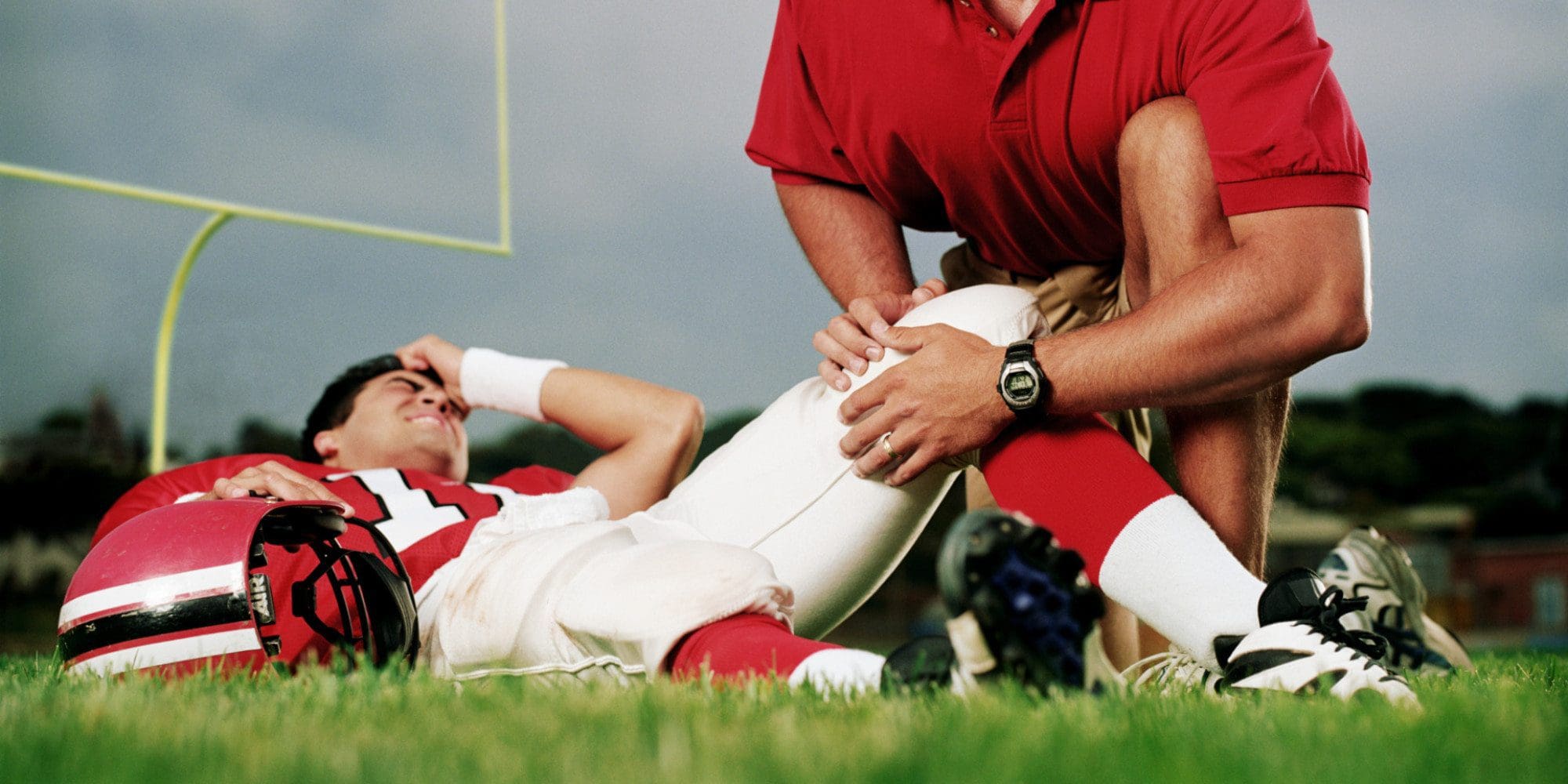Sprains, strains and tears are different types of injuries, and it’s important to know how they differ, a sports massage therapist says.
A sprain is the overstretching or tearing of ligaments, which are the tissues that connect bones to each other and stabilize them.
“Sprains occur when the joint is forced into an unnatural position. They happen most often in the ankle but can occur at any joint, such as the wrist or knee,” said Martin Mufich. He is also a clinical assistant professor at Texas A&M College of Nursing. Symptoms of a sprain include joint or muscle pain, inflammation, hampered movement, tenderness and bruising. “A mild sprain should take approximately seven to 10 days to heal,” Mufich said in a university news release.
“A torn ligament is considered a severe sprain that will cause pain, inflammation, bruising and result in ankle instability, often making it difficult and painful to walk. Recovery from a torn ligament may take several weeks, and should be done under the supervision of a health-care provider,” he explained.
A strain is the overstretching or tearing of a muscle or a tendon, which connects the muscles to the bones. It can occur from a single incident or over time. “An acute strain is an instantaneous stretch or tear of the muscle or tendon, whereas, a chronic strain stems from repetitive motions over time that place stress on the muscle or tendon,” Mufich said. Symptoms of a strain include muscle spasms, weakness, cramping, immobility, pain, bruising and swelling. It can take a few weeks for symptoms of a mild-to-moderate strain to ease, he explained.
A tear is the ripping of tissue in ligaments, muscles or tendons.
“Typically, the worse a tear, the more inflammation and pain a person will experience, and the longer it will take for the injury to heal,” Mufich said. In general, the treatment for sprains, strains and tears involves a plan called “RICES” — Rest, Ice, Compression, Elevation and Stabilization. However, for some severe tears, such as those of the anterior cruciate ligament (ACL) in the knee, surgery may be needed.
Mufich said that it is normal to experience some discomfort during the healing process from any of these injuries, but there should not be any sharp pain. “If you are not seeing improvements within 24 hours or it is getting worse, contact a health-care provider,” he advised.
SOURCE: Texas A&M, news release, Feb. 23, 2017 
For more information, please feel free to ask Dr. Jimenez or contact us at 915-850-0900 .
Table of Contents
Preventing Sports Injuries
Many athletes largely depend on chiropractic care to enhance their physical performance. New research studies have determined that aside from maintaining overall health and wellness, chiropractic can also help prevent sports injuries. Chiropractic is an alternative treatment option utilized by athletes to improve their strength, mobility and flexibility. Spinal adjustments and manual manipulations performed by a chiropractor can also help correct spinal issues, speeding up an athlete’s recovery process to help them return-to-play as soon as possible.
TRENDING TOPIC: EXTRA EXTRA: New PUSH 24/7®️ Fitness Center
Post Disclaimer
Professional Scope of Practice *
The information on this blog site is not intended to replace a one-on-one relationship with a qualified healthcare professional or licensed physician and is not medical advice. We encourage you to make healthcare decisions based on your research and partnership with a qualified healthcare professional.
Blog Information & Scope Discussions
Welcome to El Paso's Premier Wellness and Injury Care Clinic & Wellness Blog, where Dr. Alex Jimenez, DC, FNP-C, a board-certified Family Practice Nurse Practitioner (FNP-BC) and Chiropractor (DC), presents insights on how our team is dedicated to holistic healing and personalized care. Our practice aligns with evidence-based treatment protocols inspired by integrative medicine principles, similar to those found on this site and our family practice-based chiromed.com site, focusing on restoring health naturally for patients of all ages.
Our areas of chiropractic practice include Wellness & Nutrition, Chronic Pain, Personal Injury, Auto Accident Care, Work Injuries, Back Injury, Low Back Pain, Neck Pain, Migraine Headaches, Sports Injuries, Severe Sciatica, Scoliosis, Complex Herniated Discs, Fibromyalgia, Chronic Pain, Complex Injuries, Stress Management, Functional Medicine Treatments, and in-scope care protocols.
Our information scope is limited to chiropractic, musculoskeletal, physical medicine, wellness, contributing etiological viscerosomatic disturbances within clinical presentations, associated somato-visceral reflex clinical dynamics, subluxation complexes, sensitive health issues, and functional medicine articles, topics, and discussions.
We provide and present clinical collaboration with specialists from various disciplines. Each specialist is governed by their professional scope of practice and their jurisdiction of licensure. We use functional health & wellness protocols to treat and support care for the injuries or disorders of the musculoskeletal system.
Our videos, posts, topics, subjects, and insights cover clinical matters and issues that relate to and directly or indirectly support our clinical scope of practice.*
Our office has made a reasonable effort to provide supportive citations and has identified relevant research studies that support our posts. We provide copies of supporting research studies available to regulatory boards and the public upon request.
We understand that we cover matters that require an additional explanation of how they may assist in a particular care plan or treatment protocol; therefore, to discuss the subject matter above further, please feel free to ask Dr. Alex Jimenez, DC, APRN, FNP-BC, or contact us at 915-850-0900.
We are here to help you and your family.
Blessings
Dr. Alex Jimenez DC, MSACP, APRN, FNP-BC*, CCST, IFMCP, CFMP, ATN
email: coach@elpasofunctionalmedicine.com
Licensed as a Doctor of Chiropractic (DC) in Texas & New Mexico*
Texas DC License # TX5807
New Mexico DC License # NM-DC2182
Licensed as a Registered Nurse (RN*) in Texas & Multistate
Texas RN License # 1191402
ANCC FNP-BC: Board Certified Nurse Practitioner*
Compact Status: Multi-State License: Authorized to Practice in 40 States*
Graduate with Honors: ICHS: MSN-FNP (Family Nurse Practitioner Program)
Degree Granted. Master's in Family Practice MSN Diploma (Cum Laude)
Dr. Alex Jimenez, DC, APRN, FNP-BC*, CFMP, IFMCP, ATN, CCST
My Digital Business Card



